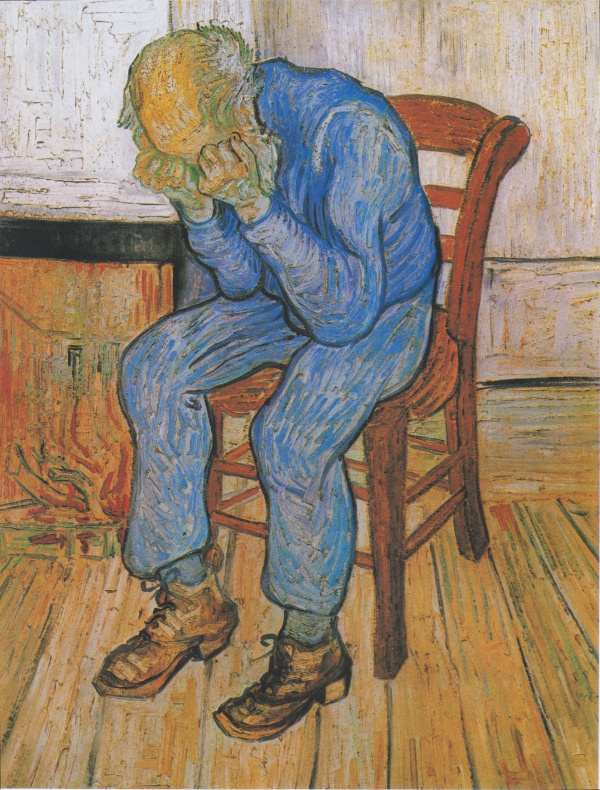Facts About Sorrowing Old Man ('At Eternity's Gate')
"Sorrowing Old Man" is a profoundly affecting oil painting by Vincent van Gogh, completed in 1890 while he was in Saint-Rémy-de-Provence. The artwork was created in early May, during a period when Van Gogh was recuperating from a severe health relapse. Tragically, this was merely two months before his death, which many believe was a suicide. In the 1970 catalogue raisonné, the painting is listed as "Worn Out: At Eternity's Gate."
The inspiration for this painting originated from a lithograph, which Van Gogh based on an earlier pencil drawing titled "Worn Out." This drawing was part of a series of studies he made in 1882, featuring an elderly pensioner and war veteran. Van Gogh conceived the idea for this series after seeing a print by Hubert von Herkomer, depicting an old war veteran, during his time in England in 1875. In his letters, Van Gogh discussed his thoughts and emotions regarding the lithograph, emphasizing themes of higher belief and the intense emotions that people, even in old age, experience.
Van Gogh's struggles with mental health are well-documented, with various theories about his condition ranging from epilepsy and bipolar disorder to the effects of substance abuse and venereal disease. His severe relapses often led to periods of confusion and unconsciousness, resulting in multiple hospitalizations, including his stay at the asylum in Saint-Rémy. Despite these challenges, Van Gogh continued to create art, including "Sorrowing Old Man" during his most difficult times.
"Sorrowing Old Man ('At Eternity's Gate')" captures Van Gogh's intense emotional state amid his battles with mental illness. While it is uncertain if this painting was specifically mentioned in his letters, it stands as a poignant representation of his inner turmoil. This piece is considered a significant work in Van Gogh's oeuvre, highlighting his profound emotional depth and artistic expression during one of the most challenging periods of his life.

 Germany
Germany